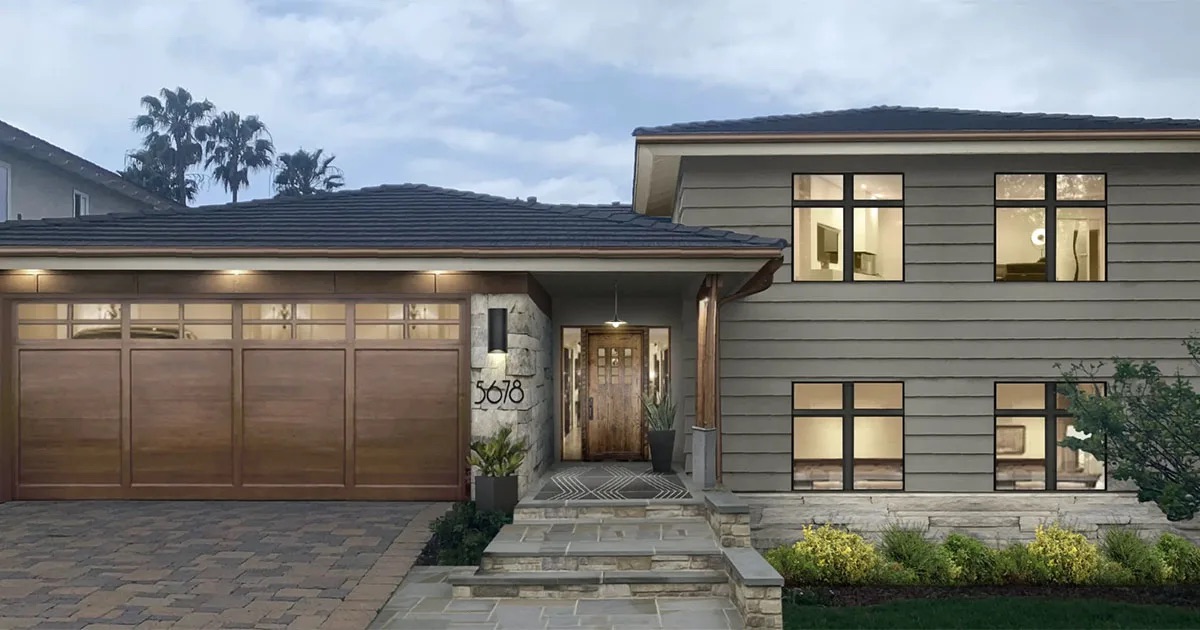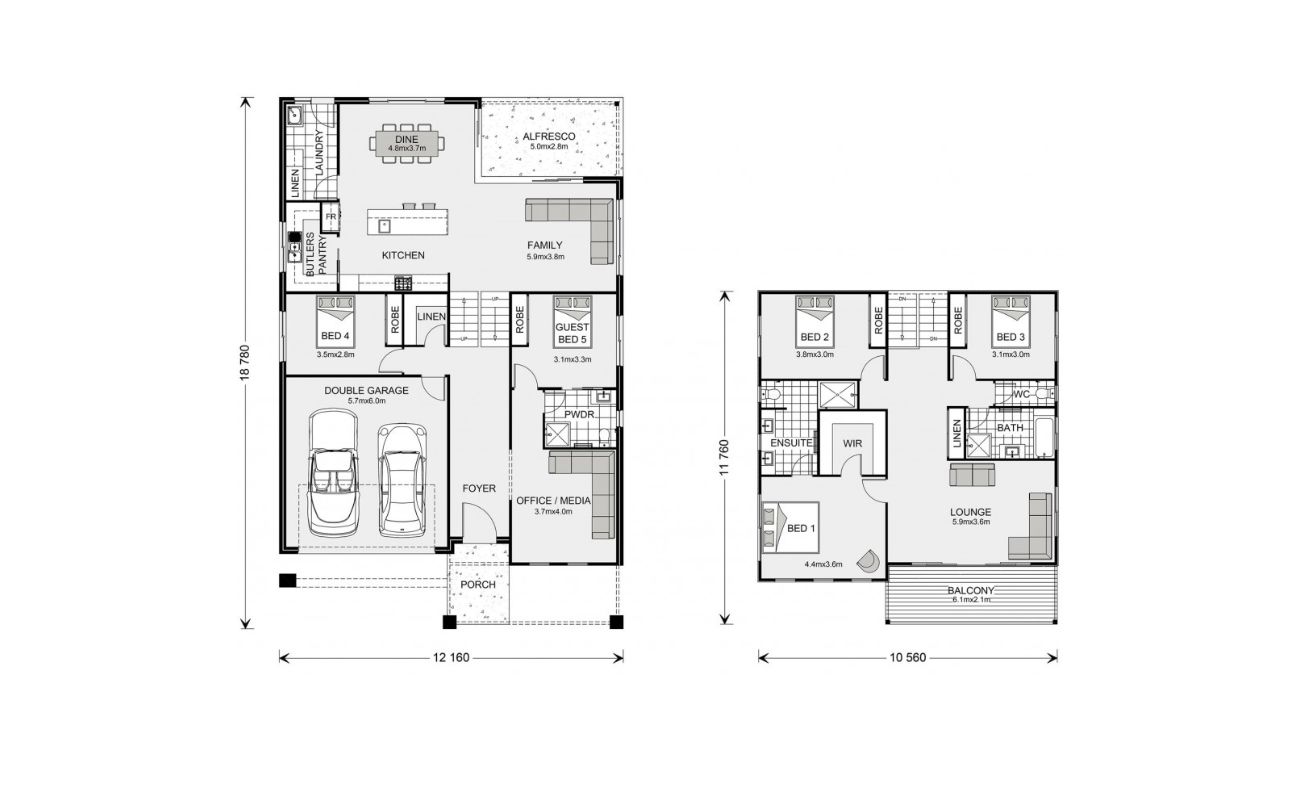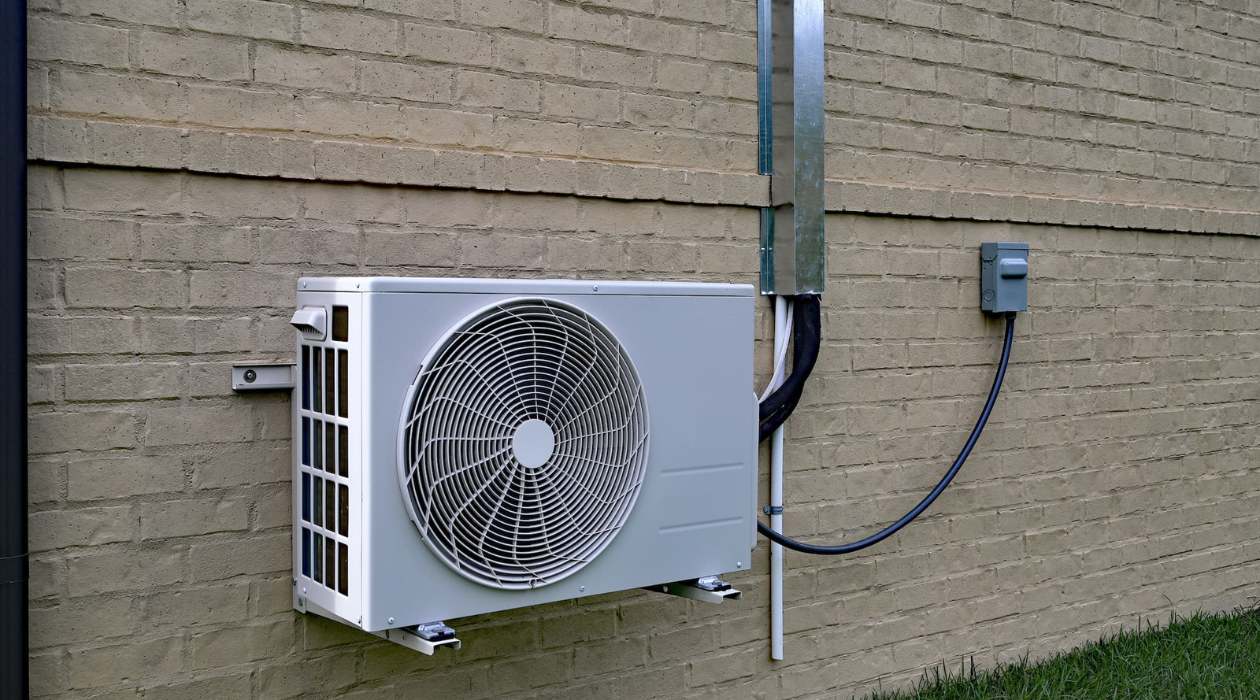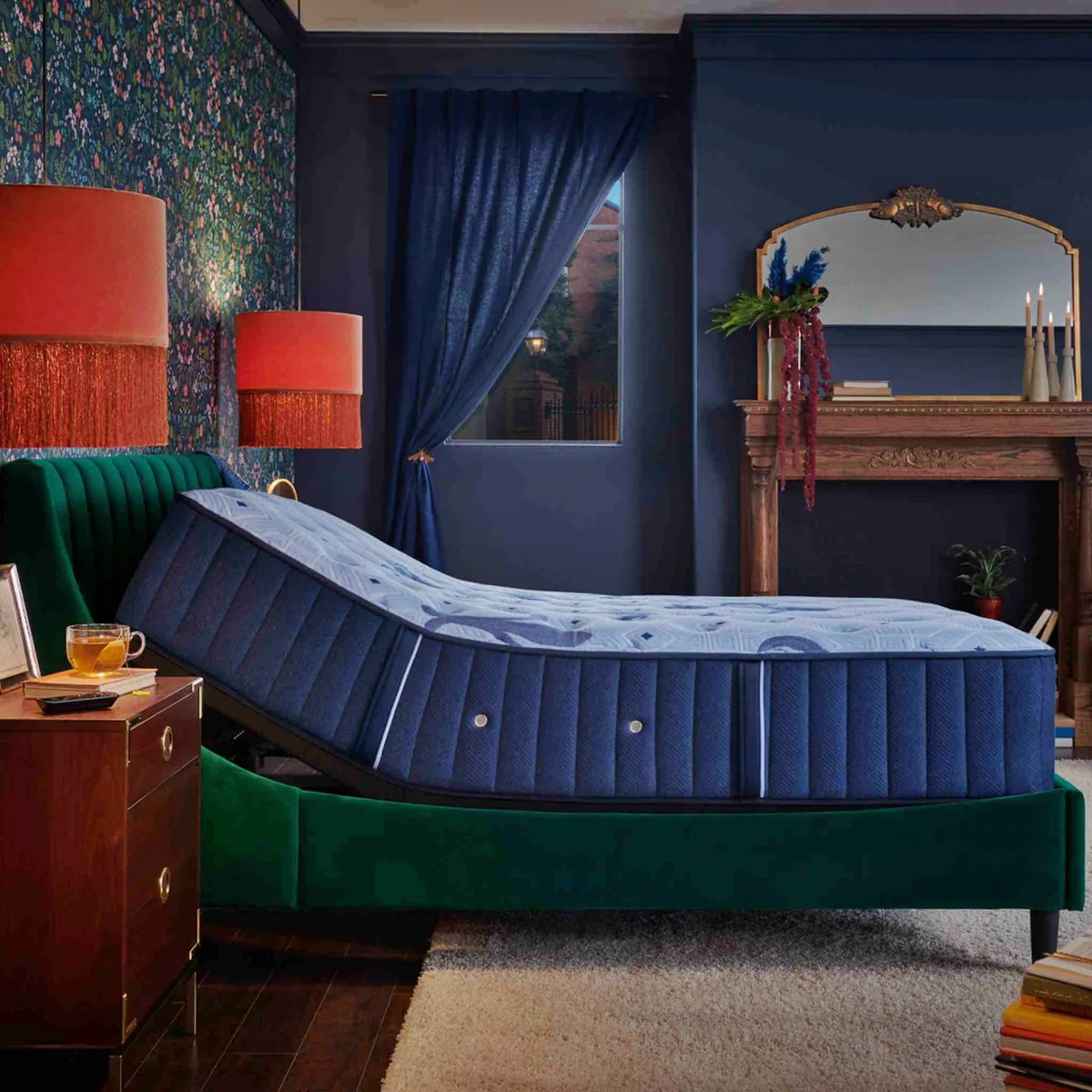

Articles
What Is A Split-Level House?
Modified: January 20, 2024
Learn all about split-level houses in this informative article. Discover the unique design and layout features that define this popular architectural style.
(Many of the links in this article redirect to a specific reviewed product. Your purchase of these products through affiliate links helps to generate commission for Storables.com, at no extra cost. Learn more)
Introduction
A split-level house is a unique architectural style that combines different levels of living spaces within a single structure. This design concept originated in the mid-20th century and gained popularity during the post-World War II housing boom. Split-level houses are known for their distinctive layout, which breaks up the traditional two-story design, creating individual zones within the home.
In this article, we will explore the definition, characteristics, and history of split-level houses. We will also delve into the benefits and drawbacks of this architectural style, as well as popular design variations and key features. Whether you’re considering buying or building a split-level house or simply curious about this intriguing architectural style, this article will provide you with valuable insights.
Key Takeaways:
- Split-level houses offer a unique architectural style that provides distinct living spaces, efficient use of space, and a versatile canvas for personalization, making them an appealing choice for homeowners seeking privacy and visual appeal.
- While split-level houses present challenges such as limited accessibility and maintenance requirements, careful consideration of lifestyle, budget, and long-term plans can help homeowners find or create a split-level house that harmonizes with their style and functionality preferences.
Read more: What Is A Split-Level House Design
Definition and Characteristics of a Split-Level House
A split-level house is a type of residential architecture that is characterized by multiple levels or half-levels, creating a unique and dynamic layout. Unlike traditional homes with two or three floors, split-level houses have staggered floor levels that are connected by short flights of stairs. This design provides separation and distinction between different living areas, while still maintaining an open and connected feel.
One of the defining characteristics of a split-level house is its entryway. Typically, there is a short flight of stairs that leads to the main living area, which is positioned between two half-levels. These half-levels often house additional living spaces such as bedrooms, bathrooms, or a family room.
Another common feature of split-level houses is the use of different ceiling heights. The main living area is usually at the center of the house and has a standard ceiling height. However, as you move up or down the half-levels, the ceiling heights may vary to create a sense of depth and interest.
Split-level houses are known for their versatility in adapting to different terrains. They are particularly popular in areas with sloping landscapes or uneven ground since they can be designed to fit the contour of the land. This architectural style allows homeowners to maximize their use of space and create unique interior design opportunities.
One of the key advantages of split-level houses is the clear separation of living spaces. The different levels provide a sense of privacy and allow for distinct areas for entertaining, relaxing, and sleeping. This layout is especially appealing for families or individuals looking for designated spaces for different activities.
In terms of exterior design, split-level houses often have a distinctive aesthetic. The façade can feature various elements such as different materials, sections of contrasting colors, or asymmetrical rooflines. This adds visual interest and enhances the overall curb appeal of the home.
Overall, a split-level house offers a unique and versatile living experience. It combines the benefits of a multi-level home with the practicality and flexibility of a well-designed layout. Whether you’re looking for additional privacy, more defined living spaces, or an architectural style that stands out, a split-level house might be the perfect choice for you.
Historical Background of Split-Level Houses
The origin of split-level houses can be traced back to the mid-20th century, specifically to the post-World War II housing boom in the United States. During this time, there was a significant increase in suburban development, with a growing demand for affordable and functional housing options.
The split-level house design emerged as a response to the need for efficient use of space on smaller suburban lots. The concept was influenced by a combination of architectural styles, including the Prairie School movement and the Modernist principles of open floor plans and natural light.
While the exact origins of split-level houses are debated, some credit the design to California architect Cliff May, known for his work in creating the modern ranch-style house. May’s designs often incorporated variations in levels to delineate different functional areas within the home.
During the 1950s and 1960s, split-level houses surged in popularity and became synonymous with suburban living. The design offered distinct advantages for growing families, as it provided separate living areas while maintaining a sense of connectedness.
Split-level houses were especially appealing for families seeking a more open and informal layout compared to traditional two-story homes. They offered greater flexibility in terms of interior design and allowed for seamless transitions between different living spaces.
Architects and developers embraced the split-level concept, and variations of the design began to emerge. One popular variation was the bi-level house, characterized by just two levels of living spaces, typically with the main living area on one level and bedrooms on the other.
While split-level houses experienced a decline in popularity during the 1970s and 1980s, they have made a resurgence in recent years. The unique layout, architectural charm, and adaptability to sloping terrain continue to attract homeowners looking for a distinctive and functional home.
Today, split-level houses can be found in suburban neighborhoods across the world. They have evolved to incorporate modern design elements and technological advancements, giving homeowners even more options when it comes to customizing their homes to fit their needs and preferences.
The historical background of split-level houses showcases not only their functional design but also their lasting appeal. With a rich architectural history and a nod to the past, these houses continue to captivate homeowners seeking a balance between practicality and unique aesthetics.
Benefits and Drawbacks of Split-Level Houses
A split-level house offers a range of benefits that make it an appealing choice for homeowners. However, like any architectural style, there are also some drawbacks to consider. Let’s explore the advantages and disadvantages of split-level houses.
Benefits:
- Separation of Living Spaces: One of the key benefits of a split-level house is the clear separation of living spaces. The staggered design allows for distinct areas for different activities, providing privacy and minimizing noise transfer between rooms.
- Maximized Use of Space: Split-level houses are known for their efficient use of space. By utilizing half-levels, homeowners can fit in more living areas without expanding the footprint of the house, making it an ideal choice for smaller lots or sloping terrains.
- Flexibility in Design: The multiple levels of a split-level house offer design flexibility. Homeowners can customize each level to suit their needs, whether it’s creating a dedicated home office, a playroom for children, or a cozy reading nook.
- Natural Light and Views: The varying levels of a split-level house allow for more windows, which means an abundance of natural light and the opportunity to enjoy beautiful views. The different angles and levels can create interesting visual perspectives both inside and outside the home.
- Distinctive Aesthetic: Split-level houses have a unique and eye-catching aesthetic that sets them apart from traditional home designs. The combination of different levels and exterior variations adds character and curb appeal to the property.
Read more: How To Open Up Split-Bedroom Design House
Drawbacks:
- Accessibility: The multiple levels in a split-level house can be challenging for individuals with mobility issues or those who prefer single-level living. Going up and down stairs frequently may not be ideal for everyone, particularly as they age.
- Heating and Cooling: Due to the layout and multiple levels, heating and cooling a split-level house can be more challenging and potentially result in uneven temperature distribution throughout the different areas of the home.
- Furniture Placement: The varying ceiling heights and half-levels can make furniture placement more complex compared to traditional homes. It may require careful consideration and creativity to maximize the use of space effectively.
- Cost of Maintenance: The unique design and construction of split-level houses may require additional maintenance and repairs over time. This can include upkeep of stairs, rooflines, and exterior elements that may be more exposed to the elements.
- Resale Value: Split-level houses may have varying resale values depending on the local real estate market and buyer preferences. Some potential buyers may prefer more traditional or open-concept layouts, which may impact the marketability of a split-level home.
While split-level houses offer numerous advantages, it’s important to weigh the benefits against the potential drawbacks to determine if this architectural style aligns with your lifestyle and preferences. Consider your current and future needs, as well as the specific features and challenges of the individual property before making a decision.
Popular Design Variations of Split-Level Houses
The split-level house design offers a versatile canvas for architectural creativity, resulting in various popular design variations. These variations cater to different preferences and requirements of homeowners. Let’s explore some of the most popular design variations of split-level houses.
1. Raised Ranch:
The raised ranch design is a variation of the split-level house that features two levels. The main living area, including the kitchen, living room, and dining room, is located on the upper level, while the lower level typically comprises additional living spaces, such as bedrooms, a family room, and a laundry area. The raised ranch design is known for its efficient use of space and practical layout.
2. Contemporary Split-Level:
The contemporary split-level design embraces modern architectural elements and incorporates sleek lines, minimalist aesthetics, and large windows. This design variation often features an open floor plan on the main level, maximizing natural light and creating a seamless flow between living spaces. It offers a clean and sophisticated look while maintaining the distinctive split-level layout.
Read more: How To Level Floor In Old House
3. Side Split:
In the side split design, the house is divided into two or three levels, with the entryway located on the mid-level. This variation allows for a more gradual transition between the levels and often features an open concept layout on the main floor. Side splits are popular for their functional layout and can offer outstanding curb appeal with the right combination of exterior elements and landscaping.
4. Back Split:
The back split design is similar to the side split, but the entrance is typically located at the lower level, allowing for a more dramatic entrance experience. This design often features a unique rear facade with large windows and access to outdoor spaces. Back splits offer privacy and a distinct separation of living areas while maintaining an open and connected feel.
5. Split-Level with Atrium:
The split-level with atrium design incorporates a central atrium surrounded by living areas on different levels. The atrium serves as a central focal point, providing an abundance of natural light and creating an indoor-outdoor connection. This design variation is ideal for homeowners who desire a unique and visually striking architectural feature.
6. Customized Split-Level Designs:
One of the great advantages of split-level houses is their flexibility, allowing homeowners to customize the layout according to their needs and preferences. Design variations can include adding additional levels, integrating unique design features, or incorporating energy-efficient elements. Customized split-level designs offer endless possibilities for personalization and creativity.
These are just a few popular design variations of split-level houses, showcasing the range of possibilities within this architectural style. Whether you prefer a traditional layout or a more contemporary aesthetic, there is a split-level design variation that can suit your taste and lifestyle.
Read more: What Is A Split System AC
Key Features and Layout of Split-Level Houses
Split-level houses are known for their unique layout and distinct architectural features. Let’s explore the key features and layout elements that define these homes.
1. Entryway and Foyer:
The entryway of a split-level house is often situated between two half-levels. It typically includes a short flight of stairs leading to the main living area. The foyer may serve as a transition space, providing access to the different levels of the home.
2. Main Living Area:
The main living area of a split-level house is usually located on the main floor or at the center of the house. This level typically houses the kitchen, dining room, and living room. It is the heart of the home and serves as the gathering space for family and friends.
3. Upper Level:
The upper level of a split-level house often consists of bedrooms and bathrooms. This level provides privacy and separation from the main living area. Depending on the design, there may be a few steps separating the upper level from the main living area.
Read more: How To Level A House With A Crawl Space
4. Lower Level:
The lower level of a split-level house is located below the main living area and can be accessed by descending stairs. This area may include additional bedrooms, a family room, a laundry room, or other functional spaces. The lower level offers an extension of the living area and provides extra room for various activities.
5. Half-Levels:
One of the distinguishing features of a split-level house is the incorporation of half-levels. These short flights of stairs connect the main levels and create the unique and staggered layout. They provide separation between different living areas while maintaining a sense of openness and connection.
6. Varying Ceiling Heights:
Split-level houses often feature varying ceiling heights. The main living area typically has a standard ceiling height, while the levels above or below may have higher or lower ceilings. This variation adds visual interest and creates a sense of depth within the home.
7. Outdoor Spaces:
Split-level houses often offer various outdoor spaces that can be accessed from different levels. These may include balconies, patios, or decks. The outdoor areas provide opportunities for relaxation, entertaining, and enjoying the surrounding landscape.
The layout of a split-level house provides distinct zones within the home, allowing for privacy and separation of living spaces. The interconnectedness of the levels ensures a sense of unity and openness. The design elements and layout of split-level houses contribute to their unique charm and appeal.
Read more: What Is A HVAC Split System
Pros and Cons of Living in a Split-Level House
Living in a split-level house offers both advantages and disadvantages. Understanding the pros and cons can help you make an informed decision about whether this architectural style is right for you. Let’s explore the benefits and drawbacks of living in a split-level house.
Pros:
- Distinct Living Spaces: The staggered design of a split-level house provides distinct living spaces, allowing for privacy and separation of activities. This layout is ideal for families or individuals who desire separate areas for relaxing, working, and entertaining.
- Open and Connected Feel: Despite the separation of living areas, split-level houses often maintain an open and connected feel. The design allows for a seamless flow between levels, making it easy to move between different spaces within the home.
- Maximized Use of Space: Split-level houses are known for their efficient use of space. The staggered layout enables more square footage without significantly increasing the footprint of the home. This is especially beneficial in areas with limited lot sizes or sloping terrain.
- Abundance of Natural Light: The varying levels of a split-level house provide ample opportunities for natural light. With more windows and different angles, the home can be flooded with sunlight, creating a bright and welcoming atmosphere.
- Enhanced Privacy: The layout of a split-level house lends itself to increased privacy. With separate levels for bedrooms and living areas, family members or roommates can enjoy a sense of privacy while still sharing the same home.
- Unique Architectural Aesthetic: Split-level houses offer a distinctive architectural aesthetic that sets them apart from traditional homes. The staggered levels and unique exterior variations add character and curb appeal, making them visually appealing.
Cons:
- Stairs and Accessibility: One major drawback of split-level houses is the presence of stairs. This can be a challenge for individuals with mobility issues, young children, or those who want to age in place. Constantly going up and down stairs can be inconvenient and physically demanding.
- Temperature Control: The multiple levels of a split-level house can make temperature control more challenging. Heating and cooling may not be evenly distributed throughout the different areas, leading to potential comfort issues and higher energy costs.
- Furniture Placement: The varying ceiling heights and half-levels can make furniture placement more complex. It may take extra effort and creativity to maximize the use of space effectively and ensure that furniture fits seamlessly within the unique layout of the house.
- Maintenance: Split-level houses may require more maintenance compared to traditional homes. With multiple levels and architectural variations, there can be additional issues to address, such as rooflines, stairs, or exterior elements that may require regular maintenance and repairs.
- Resale Value: The resale value of a split-level house may be impacted by market trends and buyer preferences. Some individuals may prefer more conventional or open-concept layouts, which could potentially affect the marketability of a split-level home.
Considering the pros and cons of living in a split-level house is essential when deciding on your dream home. Assess your lifestyle, priorities, and future plans to determine if the unique layout and characteristics of a split-level house align with your needs and preferences.
Renovation and Modernization Options for Split-Level Houses
Renovating and modernizing a split-level house can breathe new life into the home, improve functionality, and enhance its aesthetic appeal. Whether you’re looking to update a dated split-level house or personalize it to align with your style, here are some renovation and modernization options to consider:
Read more: What Is Mini Split AC
1. Open Concept Design:
One popular renovation option is to create an open concept design by removing walls that separate the main living areas. This can create a more spacious and connected feel, allowing for better flow between the kitchen, dining room, and living room. It can also maximize natural light and improve sightlines throughout the space.
2. Updated Flooring:
Updating the flooring in a split-level house can dramatically transform its appearance. Consider replacing old carpeting with hardwood or laminate flooring for a modern and cohesive look. You can also explore options like ceramic or porcelain tile in high-traffic areas or bathrooms to add durability and style to the home.
3. Modernize the Kitchen:
The kitchen is often the heart of the home. Consider modernizing it by replacing outdated cabinets, countertops, and appliances. Implementing a functional and stylish kitchen layout can greatly improve the overall value and enjoyment of the home.
4. Bathroom Upgrades:
Give your bathrooms a fresh look by updating fixtures, adding new tiles, and replacing outdated vanities. Consider incorporating modern design elements, such as walk-in showers, spa-like features, or energy-efficient fixtures, to elevate the space.
Read more: What Is A Split Queen Mattress
5. Outdoor Living Spaces:
Take advantage of outdoor spaces by creating inviting outdoor living areas. Build a deck, patio, pergola, or screened-in porch to extend the usable space and provide an outdoor oasis for relaxation and entertaining.
6. Energy Efficiency Improvements:
Consider making energy-saving upgrades to your split-level house to reduce utility costs and increase sustainability. Install energy-efficient windows, improve insulation, upgrade HVAC systems, and incorporate smart home technology to optimize the energy efficiency of the home.
7. Exterior Enhancements:
Improve the curb appeal of your split-level house by updating the exterior. Repaint the siding or add new cladding, replace old windows with modern ones, install a new front door, and update landscaping to create a welcoming and attractive exterior.
When renovating or modernizing a split-level house, it’s important to work with an experienced contractor or designer who understands the specific requirements and challenges of this architectural style. They can help you navigate the renovation process, provide expert advice, and ensure that the finished result matches your vision.
Considerations for Buying or Building a Split-Level House
Whether you’re considering buying an existing split-level house or building one from scratch, there are several important considerations to keep in mind. These factors will help ensure that you make an informed decision and end up with a split-level house that meets your needs and preferences. Here are some key considerations:
Read more: What Is A Split King Mattress
1. Lifestyle and Future Plans:
Consider your current lifestyle and future plans when deciding on a split-level house. Think about your family size, daily routines, and long-term goals. Split-level houses can be ideal for families or individuals who desire separate living areas and a sense of privacy within the same home.
2. Budget and Affordability:
Determine your budget and consider the affordability of a split-level house. Assess the costs associated with buying an existing split-level house or building a new one. Factor in potential renovations or customizations that may be necessary to create your ideal living space.
3. Location and Lot Size:
Consider the location and lot size when purchasing or building a split-level house. Evaluate the suitability of the architectural style for the specific location and the available land. Split-level houses are often well-suited for sloping or uneven lots, as they can be designed to adapt to the terrain.
4. Maintenance and Upkeep:
Keep in mind that split-level houses may require more maintenance compared to traditional homes. Consider the upkeep involved, such as maintaining stairs, rooflines, and exterior elements. Factor in the potential costs and time commitment required to ensure the house remains in good condition.
Read more: What Is A Split Floor Plan
5. Accessible Design:
If accessibility is a concern, consider how well a split-level house can accommodate individuals with mobility issues or those planning to age in place. Assess the feasibility of modifying or customizing the house to meet accessibility needs, such as installing ramps, elevators, or stairlifts.
6. Resale Value:
While your immediate needs and preferences are crucial, it’s also important to consider the potential resale value of a split-level house. Evaluate market trends and the demand for split-level houses in the area. Keep in mind that design preferences may evolve over time, so choose features that have broad appeal.
7. Professional Assistance:
Engage the services of experienced architects, contractors, and real estate professionals who specialize in split-level houses. Their expertise and guidance will help ensure that you make well-informed decisions throughout the buying/building process and that your vision translates into a well-designed and functional split-level home.
Considering these factors will help you make a more informed decision when buying or building a split-level house. By carefully assessing your needs, preferences, and long-term plans, you can find a split-level house that provides the perfect balance of functionality, aesthetics, and comfort.
Conclusion
Split-level houses offer a unique and versatile architectural style that combines functionality, privacy, and visual appeal. The distinct layout, with its staggered levels and separate living areas, provides homeowners with a sense of privacy and distinction while maintaining an open and connected feel.
Throughout this article, we have explored the definition, characteristics, and historical background of split-level houses. We’ve also discussed the benefits and drawbacks of living in one, along with popular design variations and key features. We’ve delved into renovation and modernization options, as well as considerations for buying or building a split-level house.
From their origins in the mid-20th century to their enduring popularity today, split-level houses continue to captivate homeowners with their unique charm and practical layouts. While they offer distinct advantages, such as separate living areas and efficient use of space, they also present challenges, such as limited accessibility and maintenance requirements.
Whether you are planning to buy an existing split-level house or build one from scratch, it’s important to carefully consider your lifestyle, budget, and long-term plans. Assess important factors like location, lot size, and accessibility needs to ensure that a split-level house aligns with your requirements.
By working with experienced professionals and taking the time to personalize your split-level house through renovations and modernization, you can create a home that harmonizes with your style and functionality preferences.
In conclusion, split-level houses offer a distinctive and versatile architectural style that continues to stand the test of time. With their unique layout, privacy, and visual appeal, they serve as a compelling choice for homeowners looking for a functional and aesthetically pleasing home.
Whether you’re drawn to the separation of living spaces, the abundance of natural light, or the opportunity for creativity in design, a split-level house provides a canvas for personalized living. Consider the pros and cons and weigh them against your specific needs and preferences, ensuring that a split-level house is the right fit for you.
With careful consideration and thoughtful decision-making, you can find or create a split-level house that complements your lifestyle and creates a distinct place to call home.
Frequently Asked Questions about What Is A Split-Level House?
Was this page helpful?
At Storables.com, we guarantee accurate and reliable information. Our content, validated by Expert Board Contributors, is crafted following stringent Editorial Policies. We're committed to providing you with well-researched, expert-backed insights for all your informational needs.







0 thoughts on “What Is A Split-Level House?”